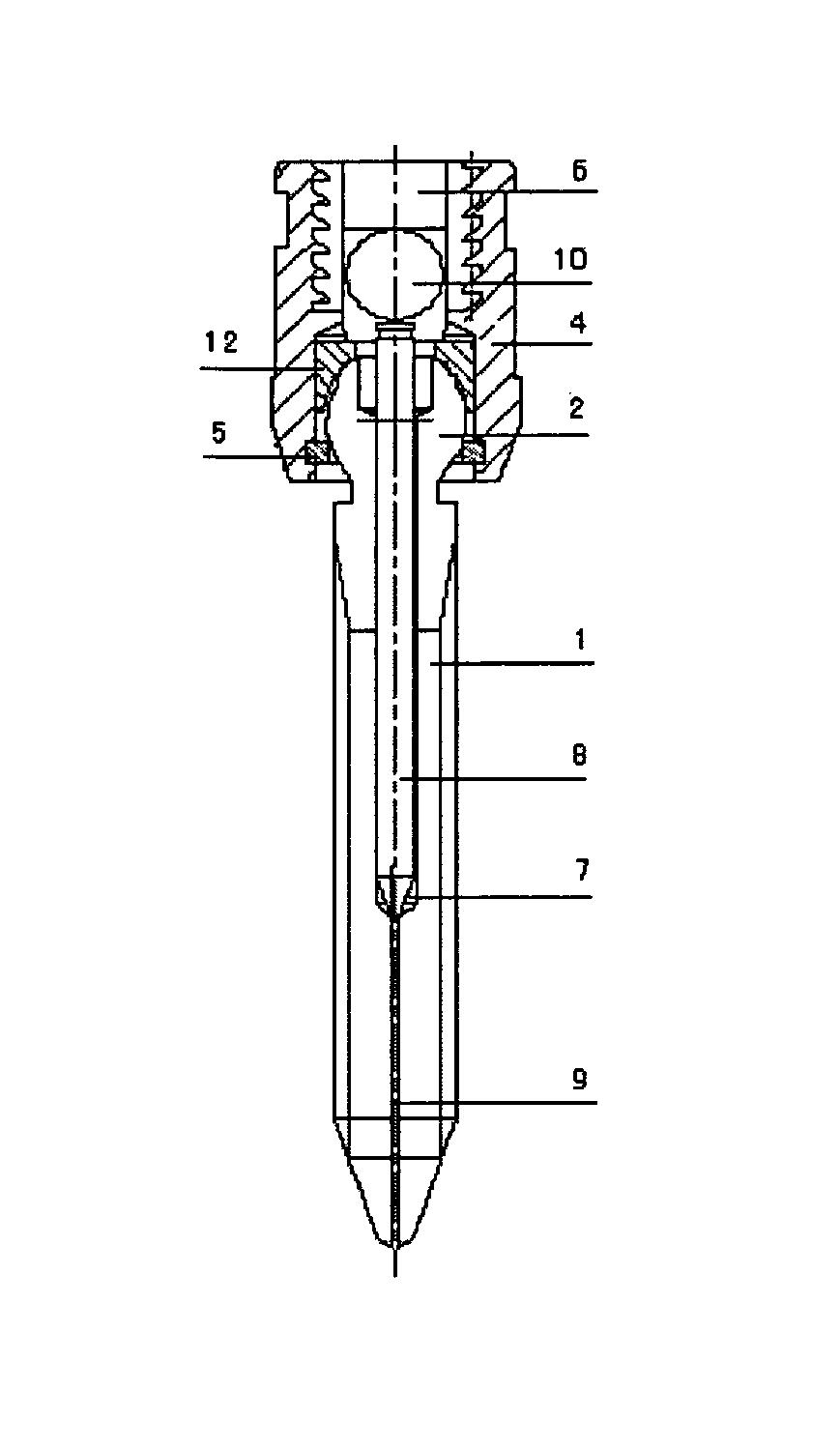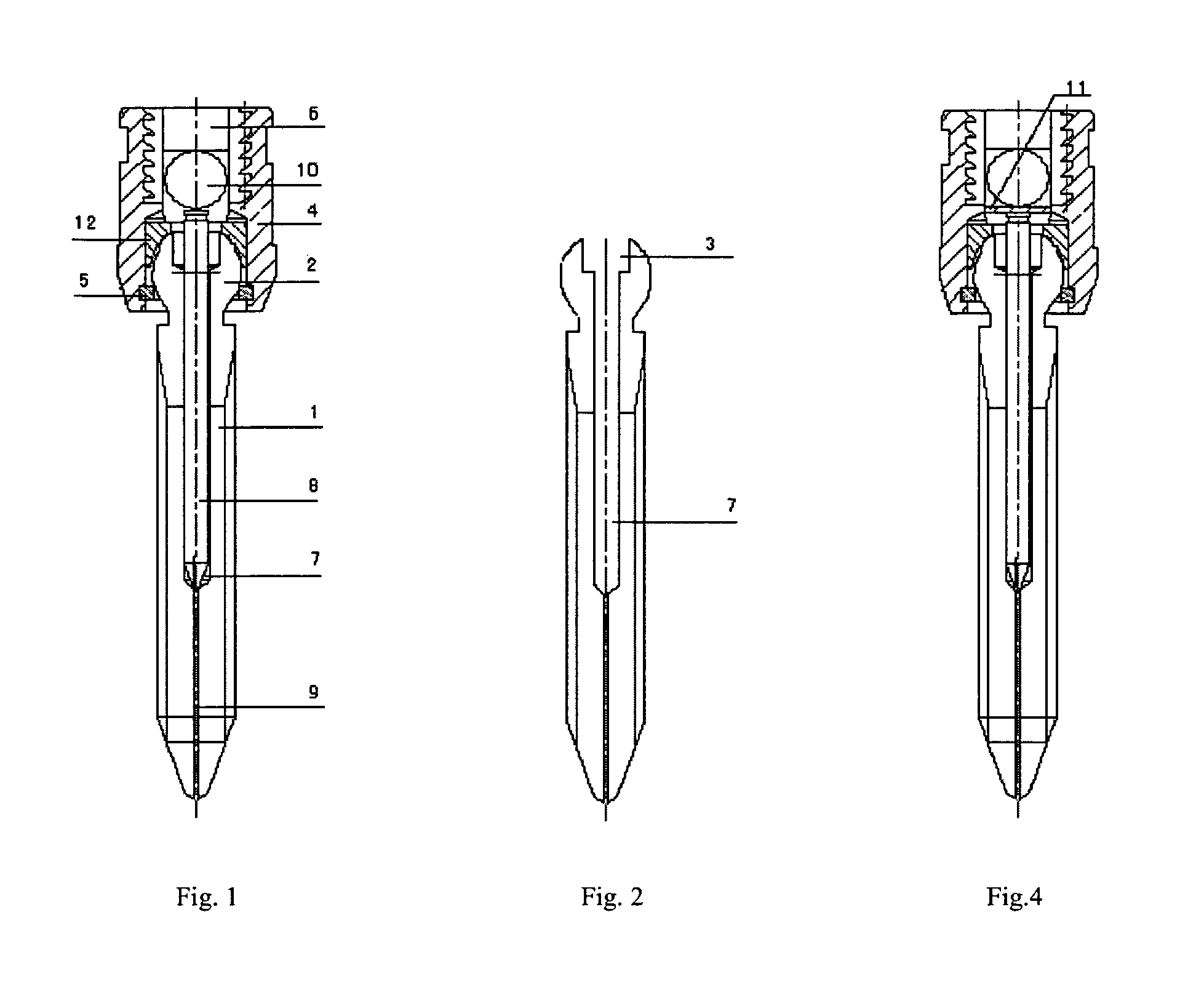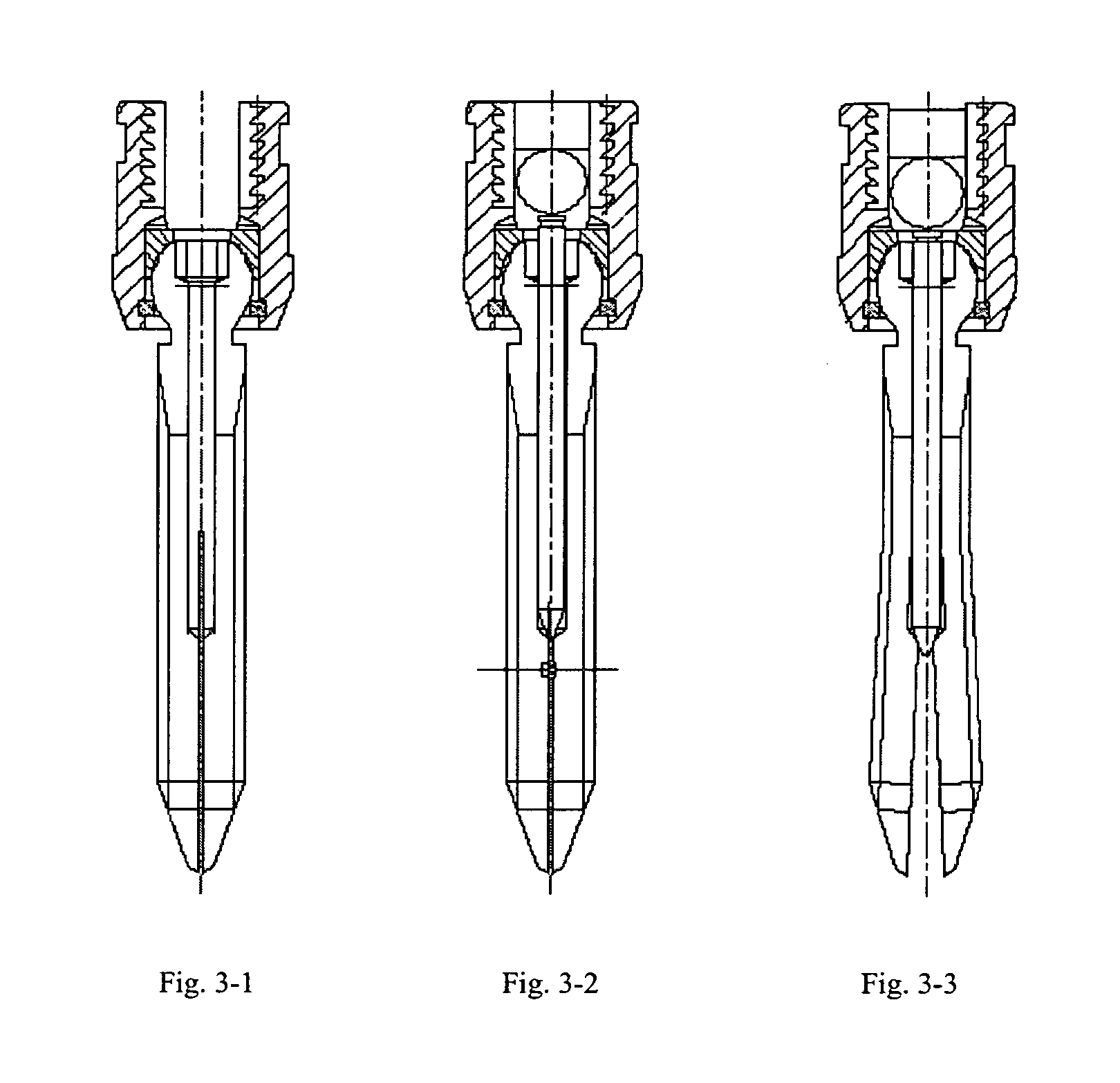Multi-axial expandable pedicle screw and an expansion method thereof
a multi-axial expandable, pedicle screw technology, applied in the field of medical devices, can solve the problems of missing the goal of surgery, reducing and fixing vertebrae, and not being able to maintain a strong fixation strength,
- Summary
- Abstract
- Description
- Claims
- Application Information
AI Technical Summary
Benefits of technology
Problems solved by technology
Method used
Image
Examples
example 1
[0021]Referring to FIGS. 1 and 2, the expansion method of a multi-axial expandable pedicle screw, adopting a multi-axial, multi-angle connecting method with other medical parts, is fulfilled by a press operation to the inner needle positioned in the bore of the screw through a rod-press technique to controllably complete an expansion process of the screw, enabling the screw to expand to 2˜3 mm based on an original diameter.
[0022]Wherein, the length of the inner needle positioned in the bore of the screw is larger than the length of the bore. The part of the inner needle exposed outside of the opening of the bore is 0.8˜1.5 mm (here is 0.8 mm). The expansion gaps are of 60%-70% of the total length of the screw (60% is in this example), and are structured by splitting grooves, starting from the tip of the screw and extending along its axial direction upward to the bore. The tips of anterior fins are curve shaped for avoiding a risk of pedicle fracture. The inner needle is inserted in ...
example 2
[0027]Referring to FIG. 4, this example is similar to Example 1 with the exception of: adding an annular pad 11 (it can be either an opening structure or an enclosed structure) between the inner needle 8 and the fixation rod 10 for preventing contacting surfaces of the inner needle 8 and the fixation rod 10 from damage. In this example, the screw is 45 mm in length, with four fins being formed of the expansion gaps 9, which extend along 31 mm of the screw, which is of 70% of the screw in total. After insertion into the bore, the inner needle 8 can be exposed outside of the upper opening of the bore by 1.5 mm. An expansion of 3.0 mm, in comparison with the original diameter of the screw, is realized in this example.
[0028]To use the present invention, the hollow screw 1 is planted by holding a tool to the pedicle by the polyhedron shaped cavity 3 (four regular polyhedron sides in this example), and then inserting the inner needle 8 into the bore 7 of the screw 1; placing the fixation ...
example 3
[0029]This example is similar to Example 1, with the exception of: the inner needle 8 and the bore with which it matches are provided with a taper shape at their tip ends respectively, in which the angle of the taper of the inner needle is less than the angle of the taper of the bore; and the outer diameter of the inner needle matches the inside diameter of the bore for an inserting connection. In this example, the screw is 40 mm in length, with three fins being formed of the expansion gaps 9, which extend along 26 mm of the screw, which is of 65% of the screw in total. After insertion into the bore, the inner needle is exposed outside of the upper opening of the bore by 3.0 mm. A 2.5 mm expansion was achieved in this example, in comparison with the original maximum diameter of the screw, ensuring to meet surgerical requirements.
PUM
 Login to View More
Login to View More Abstract
Description
Claims
Application Information
 Login to View More
Login to View More - R&D
- Intellectual Property
- Life Sciences
- Materials
- Tech Scout
- Unparalleled Data Quality
- Higher Quality Content
- 60% Fewer Hallucinations
Browse by: Latest US Patents, China's latest patents, Technical Efficacy Thesaurus, Application Domain, Technology Topic, Popular Technical Reports.
© 2025 PatSnap. All rights reserved.Legal|Privacy policy|Modern Slavery Act Transparency Statement|Sitemap|About US| Contact US: help@patsnap.com



